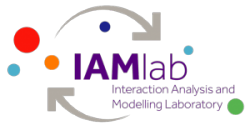Our work investigating the effect of context on Smartphone users’ typing performance in the wild is published in TOCHI.
Elgin Akpinar, Yeliz Yesilda and Pinar Karagoz, Effect of Context on Smartphone Users’ Typing Performance in the Wild, ACM Transactions on Computer-Human Interaction, Volume 30, Issue 3, Article No.: 36, pp 1–44, 2023, DOI: https://doi.org/10.1145/3577013
Abstract: Smartphones play a crucial role in daily activities, however, situationally-induced impairments and disabilities (SIIDs) can easily be experienced depending on the context. Previous studies explored the effect of context but mainly done in controlled environments with limited research done in the wild. In this article, we present an in-situ remote user study with 48 participants’ keyboard interaction on smartphones including the performance and context details. We first propose an automated approach for error detection by combining approaches introduced in the literature and with a follow-up study, show that the accuracy of error detection is improved. We then investigate the effect of context on the typing performance based on five dimensions: environment, mobility, social, multitasking, and distraction, and reveal that the context affects participants’ error rate significantly but with individual differences. Our main contribution is providing empirical evidence with an in-situ study showing the effect of context on error rate.
